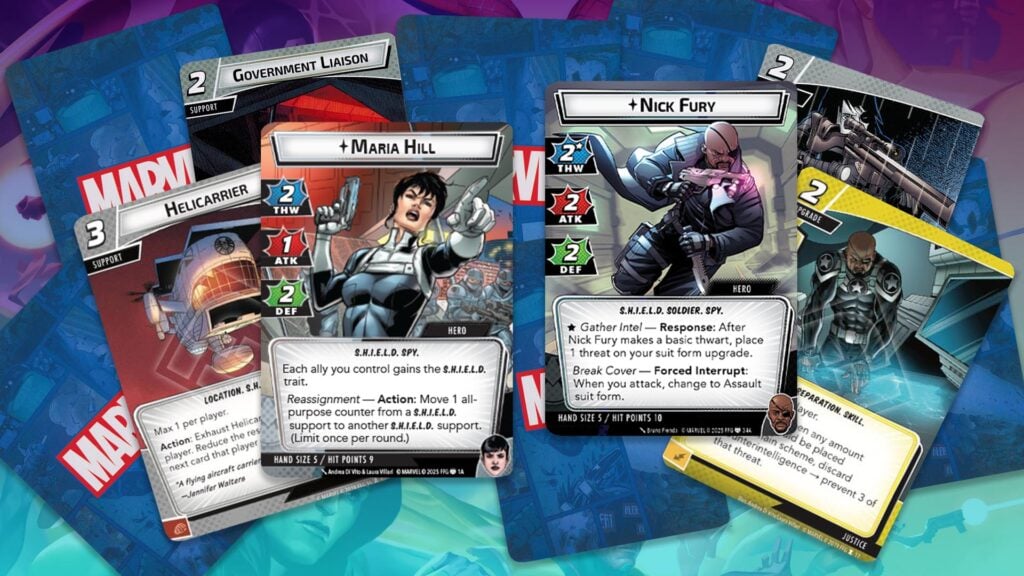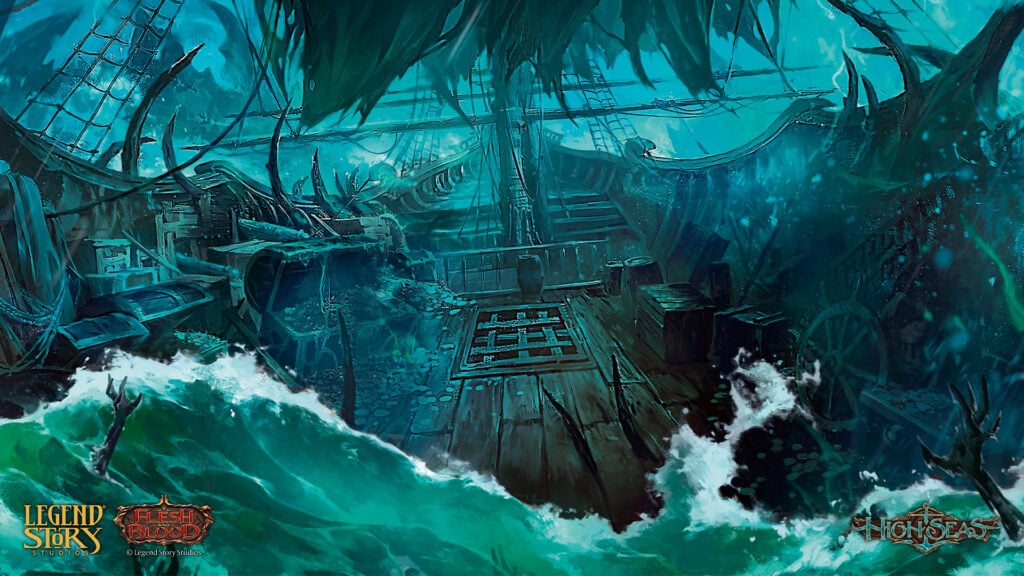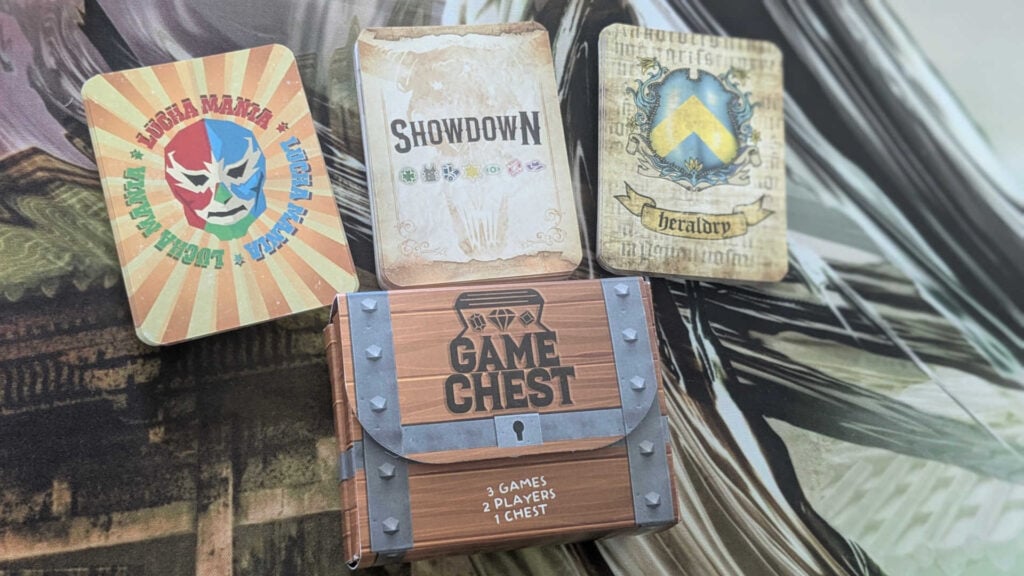Images courtesy of Fantasy Flight Games/author
With more than a month’s experience with the Agents of S.H.I.E.L.D. campaign box, it feels like a “Top 5” Marvel Champions box. Having now completed every scenario, I believe that attempts with heroes outside of Maria Hill and Nick Fury are required before I can make a definitive review of each scenario.
But a dive into the next steps with each hero is overdue. This was the first box where I was compelled to make alterations to either hero’s deck before completing all five scenarios.
As stated, it was clear that Nick Fury was my speed, while Maria Hill was powerful but unfun. For all their power, I was struggling through the first two scenarios with the decks as they appeared out of the box. As such, moving into the third scenario, M.O.D.O.K., changes were made which carried through to the end of the box. Let’s talk about those changes and how Agents of S.H.I.E.L.D. could effect other heroes going forward.
Table of Contents
ToggleNick Fury
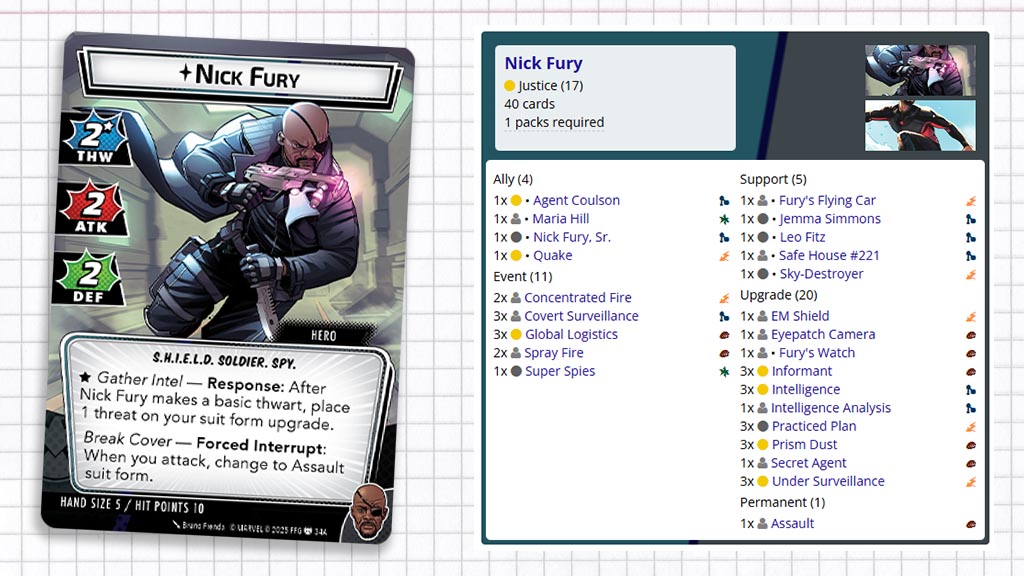
My very first game with Nick Fury was against the Black Widow scenario. As you can see in my gameplay video, while I really enjoy the scenario, it was especially challenging for Nick Fury to break out of a few key hurdles. Additionally when I moved on to Batroc, I struggled to make my way past the second stage of the main scheme.
For a Justice deck, managing the main schemes of these two scenarios proved to be too challenging out of the box.
The issue was that I was tripping over myself far too often with a few cards that were serving little purpose and leaving me wishing for something more. I needed more diversity in my options, more familiarity of card effects. For the first time, my blind play would come with alterations.
Upgrading Nick Fury
I started by taking out two copies of Under Surveillance and a copy each of Informant, Intelligence, and Nick Fury Sr., proving to be the alterations that needed to be made. Replacing these with Government Liaison, Espionage, Counterintelligence, and two copies of Sharpshooter made the deck feel a lot more resilient.
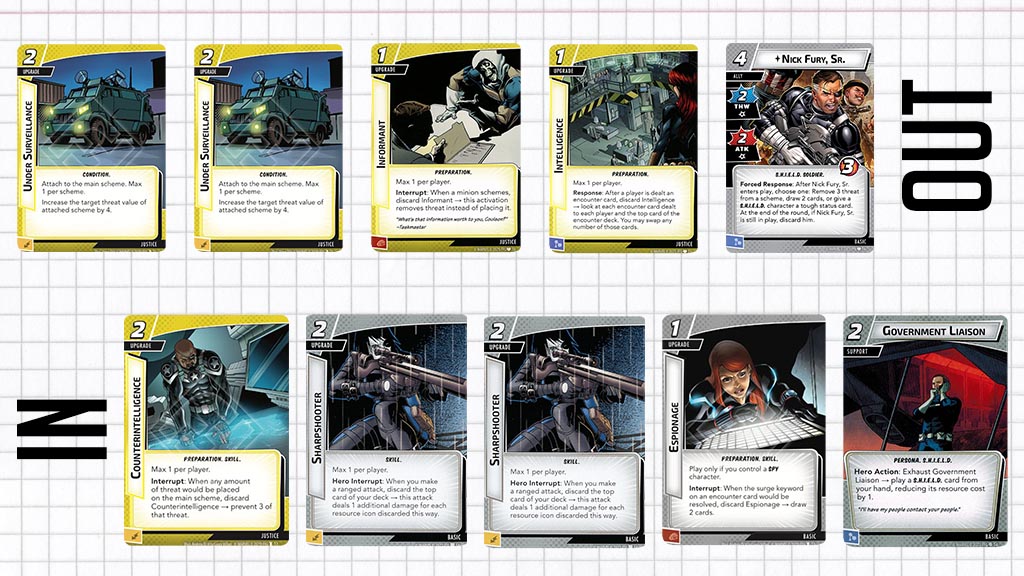
Right off the bat, I knew that Sharpshooter would be the first card that I’d fit into the deck. With Concentrated Fire and Spray Fire both being attack events with ranged, the basic upgrade would allow for even more damage to be dealt out in a turn. The deck itself does not come with any double resources, but that was not a change that felt required to tune-up the deck.
Unbeknownst to me, this change was extremely wise. The M.O.D.O.K. scenario requires you to apply consistent damage to the villain to best move through. The minion you’ll want to defeat the most, the Adaptoids, come with five health and Concentrated Fire’s four damage can be dialed up with Sharpshooter, without requiring that you use any of the threat accumulating on your Suit upgrade.
Without spoiling the remaining two scenarios, Sharpshooter’s free damage at the cost of accelerated trips through your deck means you may edge out villains or minions a turn or two early, maintaining tempo that can easily be lost. Additionally, Espionage can vary wildly in value, as surge creeps into scenarios. And Counterintelligence is a less-impressive Eyepatch Camera, but allows you a second copy and frees up choices you may need to make with your copies of Practiced Plan.
Maria Hill
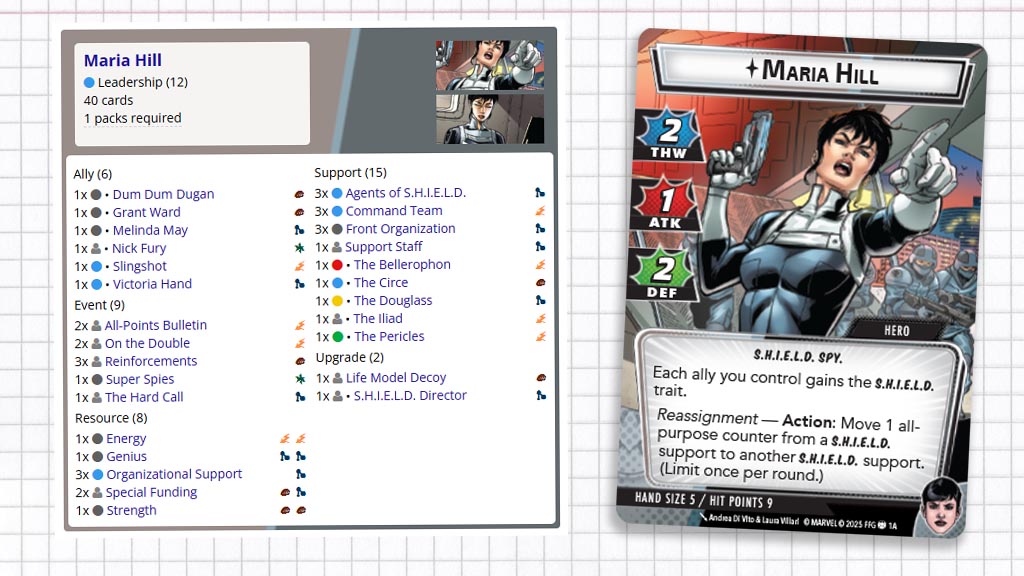
When it came time to try out the villains with Maria Hill, there wasn’t a need for the same amount of attention to get up to speed. Maria’s best strategy is using a handful of assets across multiple turns of the scenario. The biggest hurdle is that Maria needs the resources to play out the large supports in her deck. Something her deck was well equipped for in the open scenarios.
Maria trivialized Black Widow, as her main scheme never had much or any threat on it, neutralizing her gimmick. But after narrowly defeating Batroc, I elected to make a similar amount of edits to Nick Fury.
Upgrading Maria Hill
After some thought, I decided on some upgrades: Government Liaison, Helicarrier, Sky-Destroyer, and Build Support. With this suite of cards in mind, the choice was simple, we needed to remove of two copies of Agents of S.H.I.E.L.D., along with allies: Melinda May and Grant Ward.
Notably, we didn’t remove any extra S.H.I.E.L.D. support, though we’re also not adding any that have all-purpose counters that can be utilized by Maria. In fact, I was surprised how few viable options jumped out when it came time to make alterations. The more important thing was having pseudo resource generators in Government Liaison and Helicarrier. Add on some consistency in Sky-Destroyer and Build Support, Maria suddenly had the minor tune-up needed to run more efficiently.
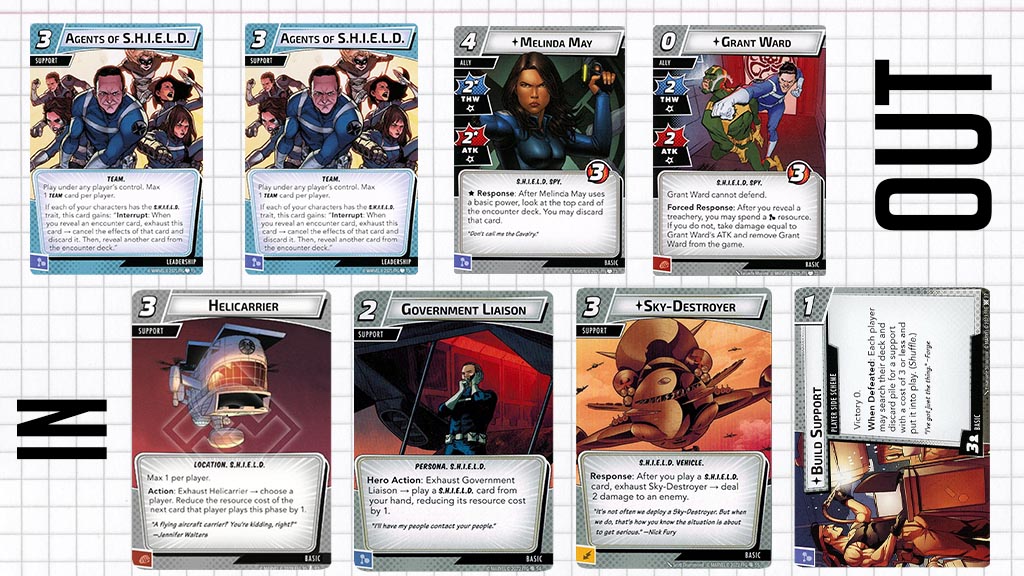
Maria never felt pinned down as I moved through the first three scenarios. But this changed moving into the Thunderbolts and Zemo scenarios. My early understanding of both scenarios found that they tend to go long, but demanded an aggressive mulligan for pieces that would smooth out your plays on turn three and beyond. This is Maria’s sweet spot, as once she has her support of choice in play, you can just prioritize cards that keep that asset going.
All in all, Maria’s better equipped to take on these last two scenarios. But Nick was my turn blind run against all five, with Maria being the second pass. As long as you can keep Maria’s health above zero, her engine works in such a way that she can play the long game – as long as you don’t accrue three or more acceleration tokens. Again, powerful, but not my favorite way to play.

Other Heroes
The future of Marvel Champions with Agents of S.H.I.E.L.D. in the mix is promising. Even within Maria and Nick’s decks, there are cards that can help to improve or invigorate existing heroes. With actual time with the cards to now take into consideration, my opinion of a few cards has skyrocketed.
While a card like Grant Ward may not have been good for Maria Hill in the long term, I can see alter ego with the Genius trait using him in tandem with Ingenuity to have a free ally that can represent a combination of six thwart or attack. Similarly, heroes that are highly dependent on establishing a board presence, like Iron Man or Bishop, are going to be able to use Front Organization effectively, avoiding any surprise upgrade or support removal.
It was obvious to many that Black Widow would be getting a lot out of the new Preparations, but I was also reminded of the potential of Lie in Wait now that Prepared Plan could recall it. Lie in Wait had been an early mainstay of my Thor decks with a limited card pool, but had gained some resurgence as I began to explore Nightcrawler Aggression decks. A Basic card allowing it to be placed back into your hand allows Lie in Wait to take on a new life that I look forward to exploiting.
Join me next time, when we’ll be diving into the previewed cards from Silk and Black Panther. With their releases only a month away, we already have some promising cards that should help to sculpt Justice and Protection even further.
As always, you can find me every week over on YouTube continuing my List Series, premiering New Player Guides, and playing games. Or check out more of my written content here on Card Gamer, like my piece on competitive balance. Or you can learn the basics of the game here. Until next time, thanks for reading.

